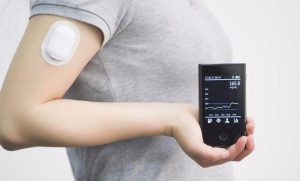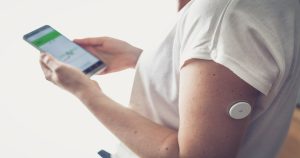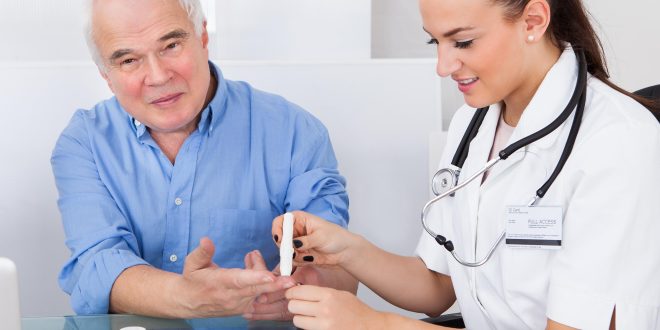Advanced technologies for diabetes management have proven invaluable in managing diabetes, providing essential data and insight that empower those living with the condition and healthcare providers to make informed treatment and lifestyle decisions. Mobile technology offers numerous benefits in managing diabetes, including remote monitoring and telemedicine consultations that allow those living with it to connect remotely with healthcare providers for check-ins, medication adjustments, ongoing support, or emergency assistance – especially useful in rural areas without access to health services.
Continuous Glucose Monitoring (CGM)
CGM systems can quickly identify and notify individuals about hypo- and hyperglycemic events, helping individuals take preventative steps against severe complications like hypoglycemia unawareness or diabetic ketoacidosis. Furthermore, data provided by CGM provides valuable insight into patterns and trends in glucose levels, which allows users to make more informed decisions regarding diet, exercise regimens, medication regimes, etc.
Advanced technologies for diabetes management related to CGM have focused on increasing accuracy, reliability, and user experience. Factory-calibrated systems offer increased user friendliness; longer wear time sensors reduce replacement frequency significantly and add convenience; integration with insulin pumps and automated delivery systems has provided closed-loop systems that utilize CGM data to tailor insulin delivery accordingly – further optimizing glycemic control. Mobile technology has quickly become a great tool in managing diabetes, providing easy access to tools and resources for monitoring blood glucose levels, medication adherence, diet tracking, physical activity tracking, and fitness tracking. Many mobile apps also include educational content and support communities for those managing their condition independently.

Mobile Technology
Mobile technology has quickly become an integral component of diabetes management, giving individuals convenient access to tools and resources for tracking blood glucose levels, medication adherence, diet, and physical activity levels. It also offers educational content, reminders, and support communities that offer comprehensive self-management support for individuals living with the condition.
Mobile technology’s primary benefit for those living with diabetes is remote monitoring and telemedicine consultations, which allow individuals to connect virtually with healthcare providers for regular check-ins, medication adjustments, and ongoing support services without physical visits. This feature is especially helpful in remote areas or for those without easy access to healthcare providers.
Mobile technology enables the consolidation of data from various sources like CGM systems, insulin pumps, and fitness trackers into one central platform for effective management. This holistic approach to data management enables both healthcare providers and users to get an accurate picture of a person’s overall health status and make more informed decisions regarding treatment and lifestyle interventions.
Mobile technology holds great promise in personalized diabetes management. Artificial intelligence and machine learning algorithms can analyze vast amounts of data to detect patterns, predict trends, and offer personalized recommendations that optimize glycemic control. By harnessing this power via mobile phones, individuals with diabetes can get customized support that meets their individual needs and preferences.

Glycemic Control Biomarkers
Biomarkers of Glycemic Control are biological indicators that measure an individual’s blood glucose levels over time and play a vital role in monitoring glycemic control and anticipating complications associated with diabetes. Some examples include HbA1c, fructosamine, and continuous glucose monitoring-derived metrics such as TIR/TBR/TAR.
HbA1c is an effective biomarker to assess long-term glycemic control, offering an average blood glucose reading over two or three months. It’s widely used by diabetes management and treatment teams as an indicator of long-term control; lower levels have been linked with decreased complications risk. Unfortunately, its measurement can fluctuate from day to day, rendering its findings unreliable in identifying short-term fluctuations.
Fructosamine is another biomarker used to assess average blood glucose levels over a shorter timeframe – typically two or three weeks. Fructosamine utilizes serum proteins glycated through glycosylation as an instantaneous way to evaluate glycemic control – making fructosamine especially helpful when sudden fluctuations arise quickly, such as pregnancy or medication changes. Time in Range (TIR), an indicator of continuous glucose monitoring, provides additional insights into glycemic control beyond traditional biomarkers. TIR measures the percentage of time that glucose levels fell between 70-181 mg/dL over an extended period, making this an invaluable way of measuring variation and risk; higher TIR scores indicate more favorable results.

Conclusion
Advanced Technologies for Diabetes Management includes continuous glucose monitoring, mobile technology, and biomarkers of glycemic control which are indispensable tools for managing diabetes for those living with it and healthcare providers alike. Utilizing such technologies enables individuals to take proactive steps toward optimizing glycemic control, reducing complications risk, and enhancing quality of life – ultimately improving lives worldwide. As technology progresses, further developments may emerge that enable millions more living with this condition to experience improved outcomes on their journeys with it.
FAQs
What is continuous glucose monitoring (CGM)?
Continuous glucose monitoring (CGM) technology enables individuals with diabetes to continuously track their blood glucose levels throughout the day and night. CGM involves inserting a sensor under the skin that measures interstitial fluid glucose levels before wirelessly transmitting data back to a receiver or smartphone app receiver.
How does CGM help in diabetes management?
CGM provides real-time information on glucose levels, enabling individuals to detect and respond quickly to hypo- and hyperglycemic events. Furthermore, its insights into patterns and trends allow users to make more informed decisions regarding diet, exercise, medication regimen, or other related areas.
What is mobile technology’s role in diabetes management?
Mobile technology, including smartphone apps and wearable devices, plays a crucial role in diabetes management by providing tools and resources for monitoring blood glucose levels, tracking medication adherence, and promoting healthy lifestyle behaviors. It also facilitates remote monitoring and telemedicine consultations, allowing individuals to connect with healthcare providers virtually.
What are the biomarkers of glycemic control?
Biomarkers of Glycemic Control are biological indicators that represent an individual’s blood glucose levels over time. Common biomarkers include HbA1c, fructosamine, and continuous glucose monitoring-derived metrics like time in range (TIR), time below range (TBR), and time above range (TAR).
 aim specialty health Discover Expert Insights, Empower Your Wellness With Aim Specialty Health Blogs.
aim specialty health Discover Expert Insights, Empower Your Wellness With Aim Specialty Health Blogs.




